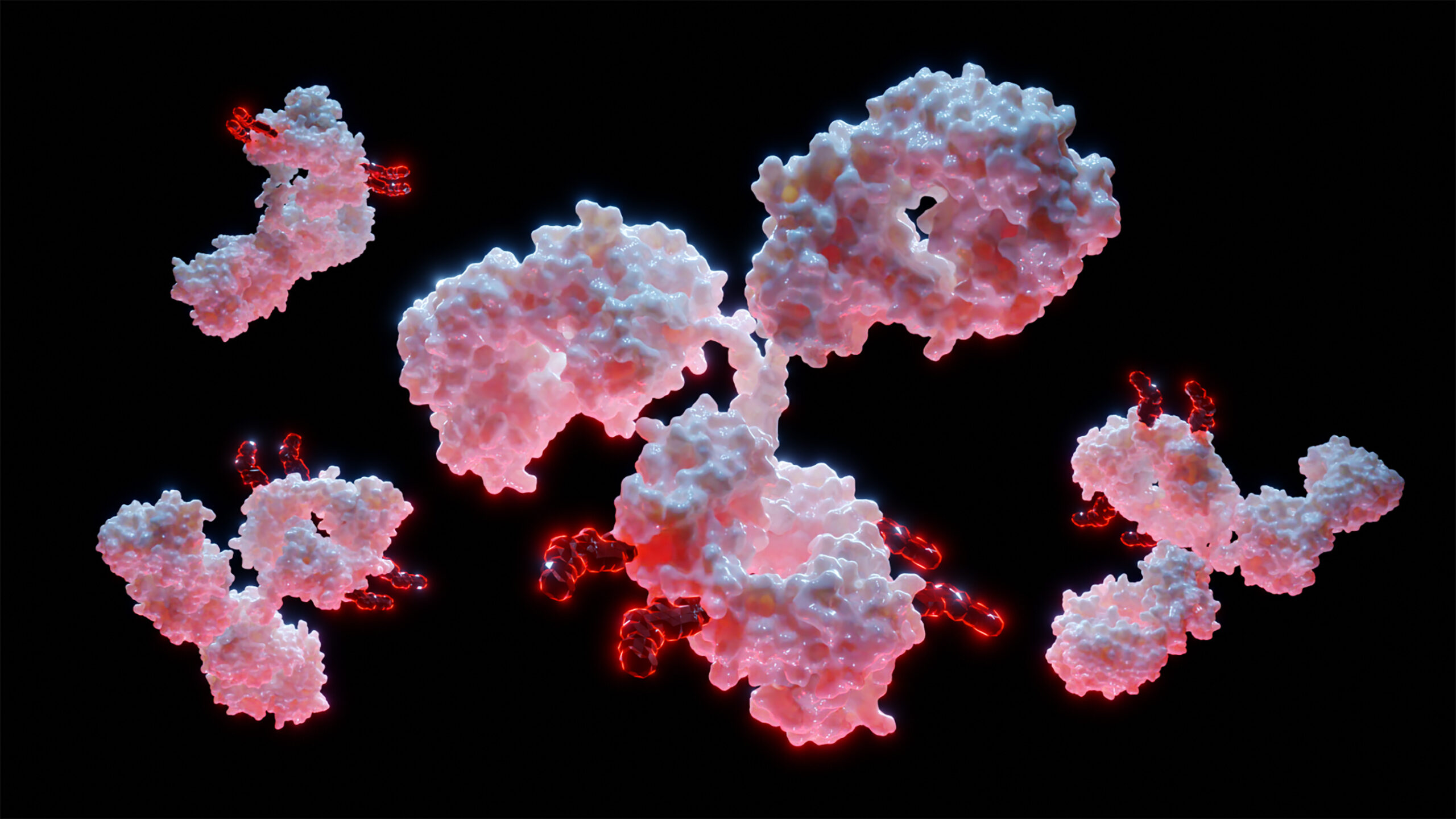
Rock mAb and ADC characterization with Stunner
The Problem
Therapeutic antibodies are the workhorses of targeted drug therapies – but early on in development sample volumes are precious and the wrong conditions can let aggregation strike out of nowhere. Tacking drug-linkers on antibodies to make ADCs (antibody drug conjugates) is the next evolution in targeted therapies, but extra production steps mean quantities are always limited and hydrophobic drug-linkers make ADC aggregation risk even scarier. Plus, ADCs’ increased complexity even makes reading concentration by UV/Vis tricky when drug absorbance gets in the way. Tools that are low sample consumption, high-throughput, and flexible are essential to meet these challenges head-on.
The Solution
Stunner streamlines antibody and ADC characterization by delivering concentration, size, and aggregation with only 2 µL and in 2 minutes per sample. If you’re working with conjugates, Stunner’s Unmix software algorithms break down the signal coming from the antibody and the drug to let you quantify protein, drug, and drug-antibody ratio (DAR) in a flash. This means faster results, less wasted sample volume, and the speedy results you need to run full-scale screening and optimization experiments.
The Proof
We will show all the tools Stunner has to characterize proteins and conjugates, and how Stunner can keep a close eye on concentration and size as a part of development workflows. We’ll track yield and aggregation from an antibody as it moves through buffer exchange, and then take that antibody and analyze it after conjugation to two separate drug-linkers. All this highlights how using Stunner for quick and frequent sample characterization is key to knowing your therapeutic is holding up during development.

